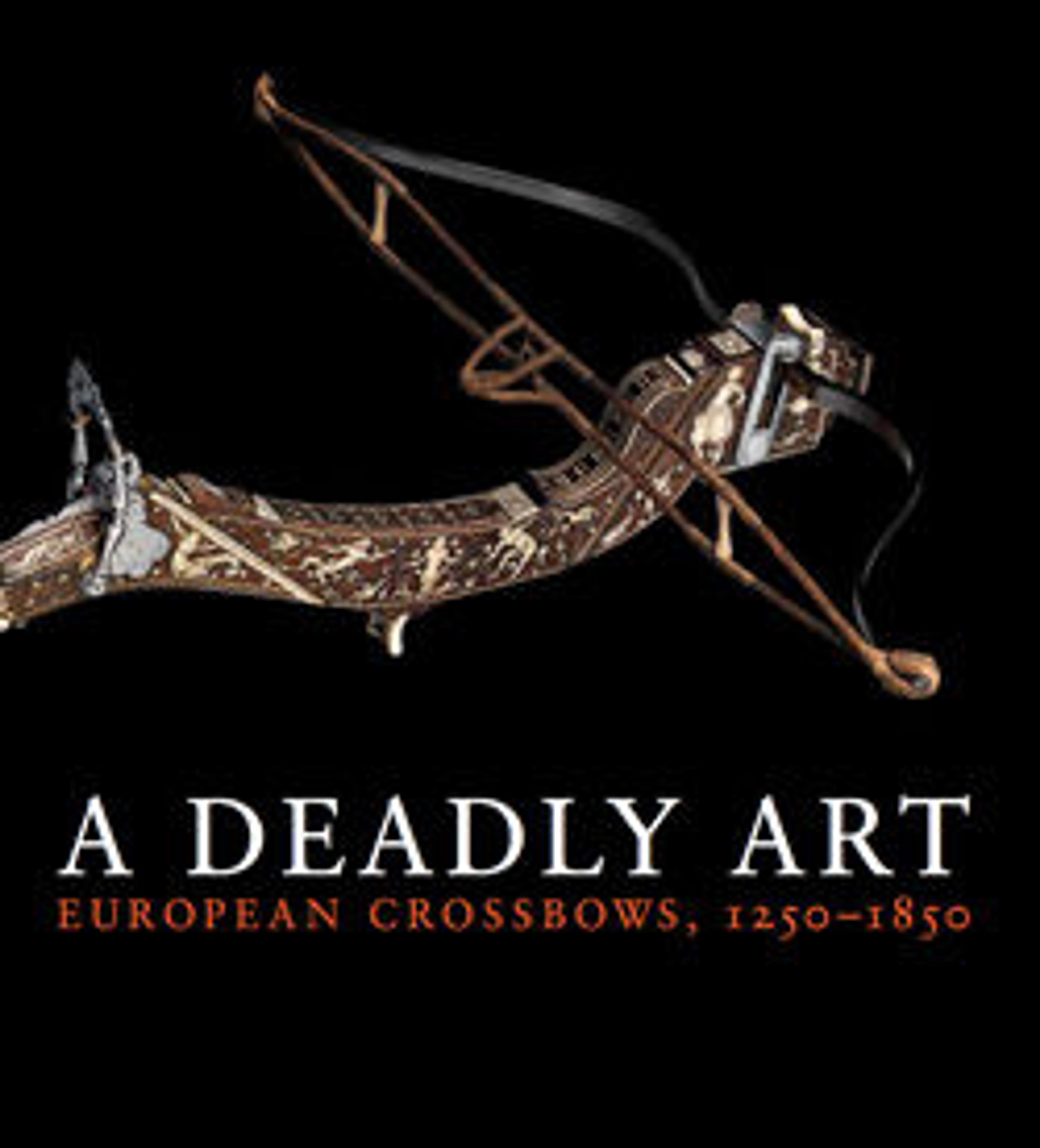Twelve Crossbow Bolts
For reason of the greater power of the crossbow compared to the longbow, crossbows could not shoot slender arrows but had to use sturdy bolts. The bolt or quarrel (from French carreau, square) has a socketed head almost square in cross section and with an obtuse point that would not bend upon impact on plate armor; the rear end of the shaft was flattened in order to fit into the notch of the crossbow's nut. Two strips of stiff leather or thin wooden slats are set at an angle into grooves in the shaft, in order to give the bolt a flight-stabilizing spin. Later the idea of the spinning missile was adopted for rifle bullets.
Hunting bolts had lighter heads than quarrels for warfare; their fletchings are often made of three feathers, carefully set so that the bolt could lie flat on the crossbow's runner, with one feather sticking upward. Often these feathers were dyed bright colors or striking patterns to make identification of the hunting prey possibly, and also to help in recovering stray bolts.
Crossbow bolts with cylindrical heads filed with two crossing grooves at the fore-end in order to produce four blunt tips, were sporting bolts especially designed for shooting at man-size targets in the shape of heraldic eagles. These Vogelschiessen and Schützenfeste (marksmen's festivals) are still held today in quaint little towns in Germany and Switzerland, but they were serious training in the days when the safety of a community depended on the military strength of its citizen's militia. Since the obvious way of defending a walled town was with as many crossbowmen as possibly, every able-bodied man had to be trained in the use of this weapon, and failure to do so might result in facing an additional tax or even in losing one's voting rights. In shooting contests the target birds were made of wood, with all parts loosely doweled together, so that a lucky shot would knock off wing or tail feathers, head or leg. All parts were numbered for keeping score, and whoever either had the highest score or brought down the depleted torso with a final shot was the Schützenkönig ("King of the marksmen") for the year. In the good old days, that meant exemption from all city taxes for the period of his "reign!"
Hunting bolts had lighter heads than quarrels for warfare; their fletchings are often made of three feathers, carefully set so that the bolt could lie flat on the crossbow's runner, with one feather sticking upward. Often these feathers were dyed bright colors or striking patterns to make identification of the hunting prey possibly, and also to help in recovering stray bolts.
Crossbow bolts with cylindrical heads filed with two crossing grooves at the fore-end in order to produce four blunt tips, were sporting bolts especially designed for shooting at man-size targets in the shape of heraldic eagles. These Vogelschiessen and Schützenfeste (marksmen's festivals) are still held today in quaint little towns in Germany and Switzerland, but they were serious training in the days when the safety of a community depended on the military strength of its citizen's militia. Since the obvious way of defending a walled town was with as many crossbowmen as possibly, every able-bodied man had to be trained in the use of this weapon, and failure to do so might result in facing an additional tax or even in losing one's voting rights. In shooting contests the target birds were made of wood, with all parts loosely doweled together, so that a lucky shot would knock off wing or tail feathers, head or leg. All parts were numbered for keeping score, and whoever either had the highest score or brought down the depleted torso with a final shot was the Schützenkönig ("King of the marksmen") for the year. In the good old days, that meant exemption from all city taxes for the period of his "reign!"
Artwork Details
- Title:Twelve Crossbow Bolts
- Date:15th–17th century; j, probably 15th or 16th century
- Culture:Western or Central European; j, possibly Switzerland
- Medium:Steel, wood (oak, ash), leather, feathers
- Dimensions:(j), L. 17 3/16 in. (43.7 cm); L. head 2 5/8 in. (6.6 cm); W. head 3/4 in. (1.9 cm); Wt. 2.6 oz. (74 g)
- Classification:Archery Equipment
- Credit Line:Gift of William H. Riggs, 1913
- Object Number:14.25.1591a–l
- Curatorial Department: Arms and Armor
More Artwork
Research Resources
The Met provides unparalleled resources for research and welcomes an international community of students and scholars. The Met's Open Access API is where creators and researchers can connect to the The Met collection. Open Access data and public domain images are available for unrestricted commercial and noncommercial use without permission or fee.
To request images under copyright and other restrictions, please use this Image Request form.
Feedback
We continue to research and examine historical and cultural context for objects in The Met collection. If you have comments or questions about this object record, please contact us using the form below. The Museum looks forward to receiving your comments.
